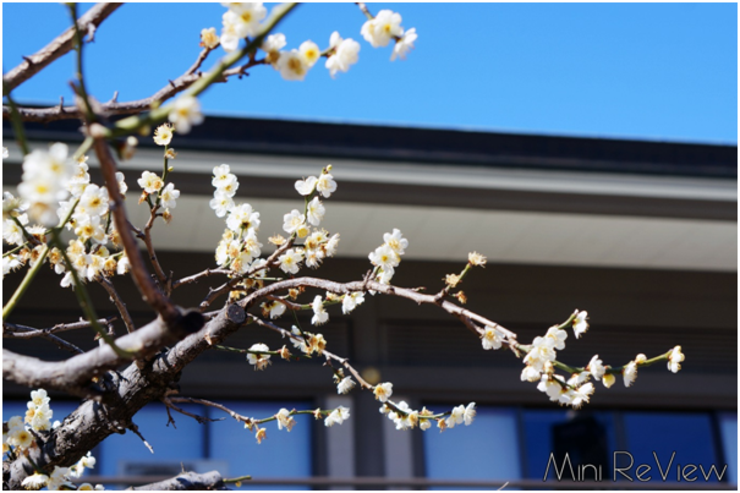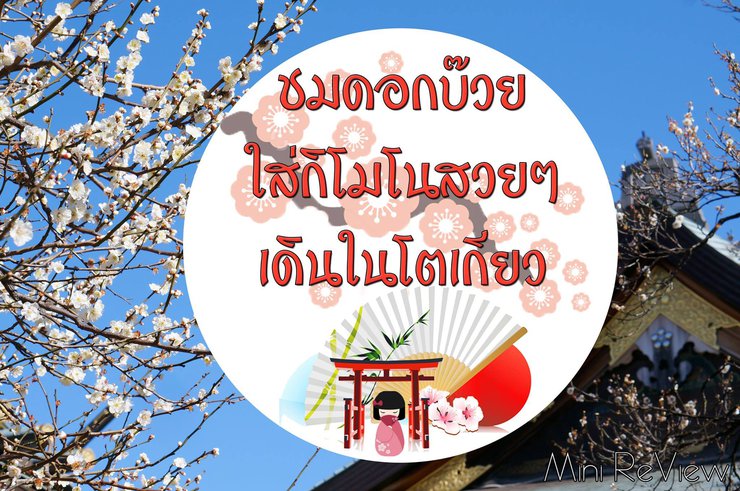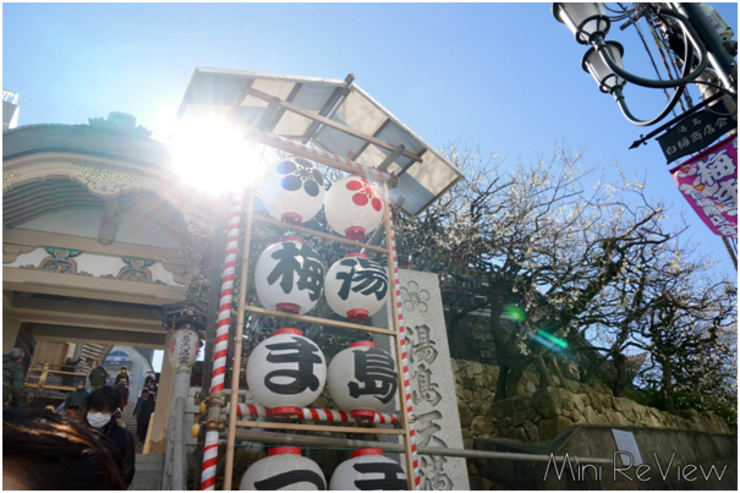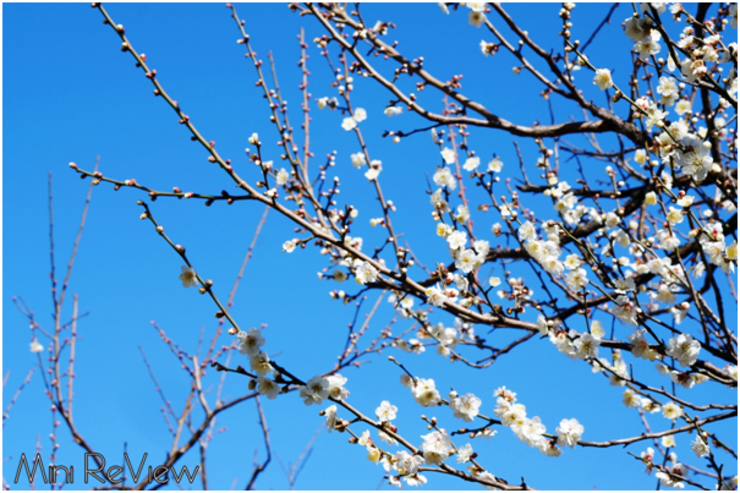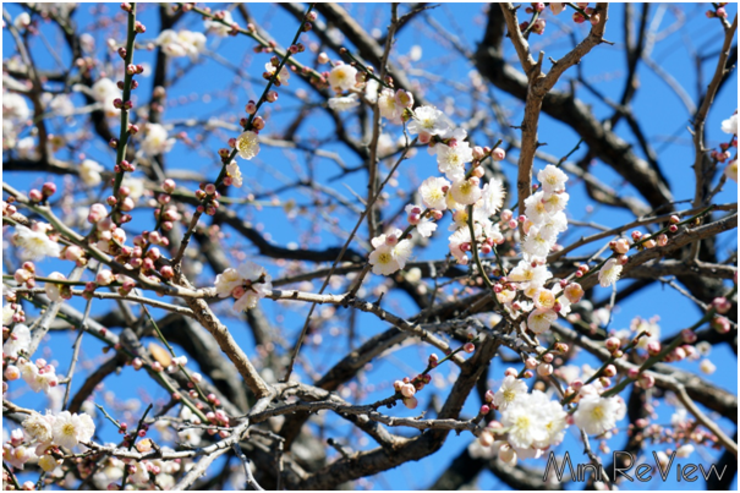
Today's mini-review takes everyone on a trip to Japan!
It's still a bit chilly in Japan these days, and some people are heading there to enjoy the cool weather and escape the scorching summer heat back home. But did you know that besides the cool weather, there are also beautiful flowers blooming in Japan right now? That's right, it's the "plum blossom" season!

For the Japanese, plum blossoms, also known as "ume" blossoms, symbolize the winter season. Currently, the Japanese are enjoying the "Plum Blossom Festival" before the upcoming cherry blossom season.

The plum blossom, originating in China, has spread to Japan, Korea, and Vietnam. Its ability to bloom amidst snow and cold weather makes it a symbol of the arrival of spring.

The plum blossom boasts a diverse array of colors and varieties, ranging from deep red and vibrant pink to pure white. Blooming during the winter season when other trees are still bare, its beauty is further accentuated.

Contrary to popular belief, plum blossoms were admired in Japan even before cherry blossoms. In fact, plum blossom festivals have been held since the Nara period (710-794 AD), while cherry blossoms only gained popularity during the Heian period (794-1185 AD).

Today's mini-review takes you to the Ume-matsuri (梅祭り) at Yushima Tenjin Shrine (湯島天神) in Tokyo. Here, you can witness the beauty of over 300 plum trees (mostly the white Shirogane variety) blooming in full splendor. The festival also features Wadaiko drumming performances, Japanese tea tastings, and various other shows.


Upon approaching the front of the shrine, one is immediately greeted by the sight of plum blossoms.




Currently, there are both blooming and budding flowers. Most of them are white and light pink.

The closer you look, the more beautiful it is. ><


Upon entering, one will encounter a shrine surrounded by blooming plum blossoms.



Upon entering, you will be greeted by a plum blossom garden.

Japanese people also admire the plum blossoms and take beautiful pictures.


Wearing a kimono while strolling through the plum blossoms is an incredibly delightful experience. >_<
The shrine itself is also beautiful ^^

A stone stele stands in the middle of the garden.

A small garden is located on the other side, but access is restricted. Instead, I have captured some beautiful images.

This shrine is famous for its ability to grant wishes related to passing exams. As a result, it is always crowded with students praying for success in their university entrance exams. This is evident from the numerous prayer plaques left behind by students.




This shrine enshrines "Suguwarano Michizane," a renowned educator and politician during the Heian period, who had a particular fondness for plum blossoms.
Upon his death and subsequent deification as the "God of Knowledge," the plum blossom symbol was adopted as the official emblem of all shrines dedicated to his worship.
Students across Japan often visit shrines to pray for good luck before exams.

A wide variety of amulets are available for purchase, with a strong emphasis on those believed to bring success in examinations.

I long to return home. It is breathtakingly beautiful, but the price tag is heart-wrenching.

The garden also features a small plum tree. Visitors can purchase saplings to take home and continue nurturing.


I would love to bring it back, but the climate in our country may not be suitable. I'll take pictures instead. TwT

Both pink and white are beautiful.



There are also small shops selling souvenirs, gifts, and snacks.

This shrine is located in Tokyo, making it easily accessible. Simply take the Chiyoda subway line and get off at Yushima Station.
Just a short walk from the station and you'll be there.

Upon entering the temple, remember to cleanse yourself at the water basin, following Japanese customs.

Using the right hand, scoop water with a ladle and wash the left hand.

Then, switch to using your left hand to hold the ladle and wash your right hand.

Next, use your right hand to scoop up water again and pour it into your left hand to rinse your mouth. Finally, use both hands to hold the ladle upright so that the remaining water flows down the handle to wash it. Then, place the ladle back in its place and you can enter the shrine to pay your respects.

For those who want to take photos without many people, you can go early in the morning. The shrine opens at 8:00 AM and closes at 7:30 PM.
The shrine also has an English website. If you would like to see more details, please visit the website.
Official website of Yushimatenjin Shrine
Although the plum blossoms in our photos are not in full bloom, as they were taken in mid-February, I can assure you that they are still incredibly beautiful. If you visit after this, I am confident that they will be in full bloom and even more stunning.
In addition to this temple, other popular places to visit for plum blossoms or "Plum Blossom Festival" include:
Osaka Castle Park (mid-March to early April)
Hanenoki Park, Tokyo (February 7 - March 1)
Tenman Shrine, Kyoto (early February to late March)
Nagoya Botanical Garden (February 25 - March 22)
Misato Plum Grove, Takasaki City (March 1 - mid-March)
Note: The exact blooming date of plum blossoms may vary depending on the weather conditions at each location.
If I have time, I will review beautiful kimono sets in Tokyo in the next post.
Stay tuned for more reviews. Don't forget to like and share!
⁃ Facebook: https://www.facebook.com/MiniReviewss/
- YouTube: NoufaiiMini_MiniReview
⁃ Hashtag: #minireview
MiniReview
Friday, October 4, 2024 3:20 PM




